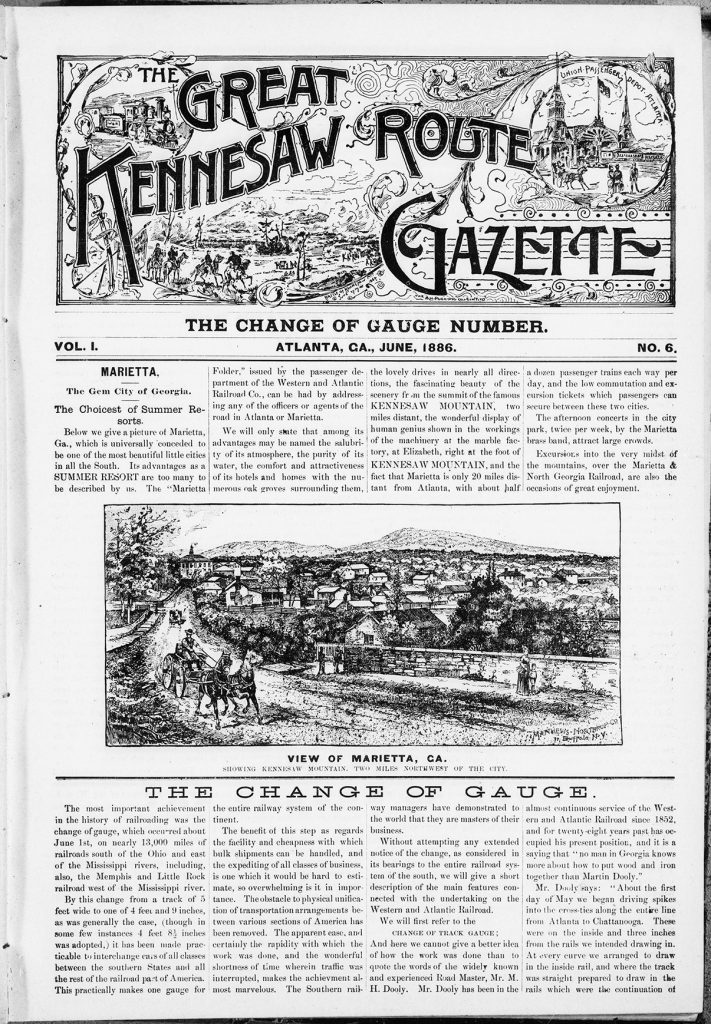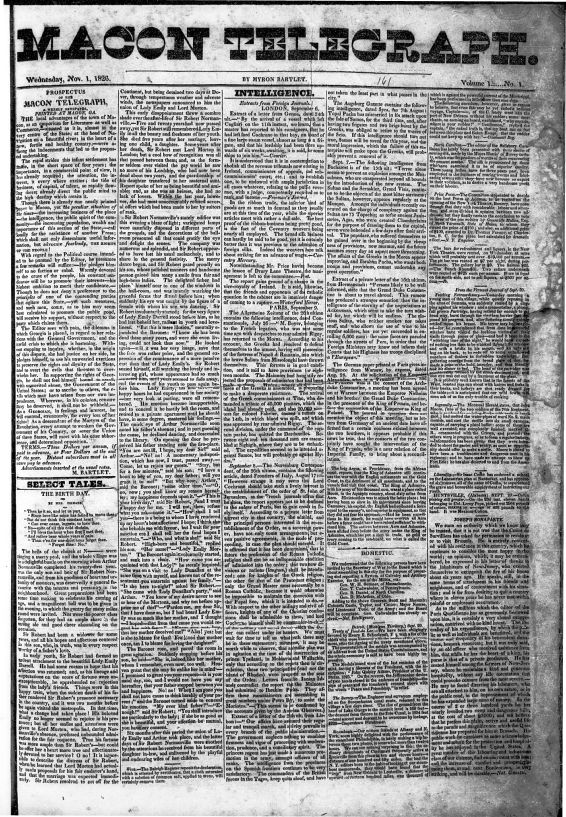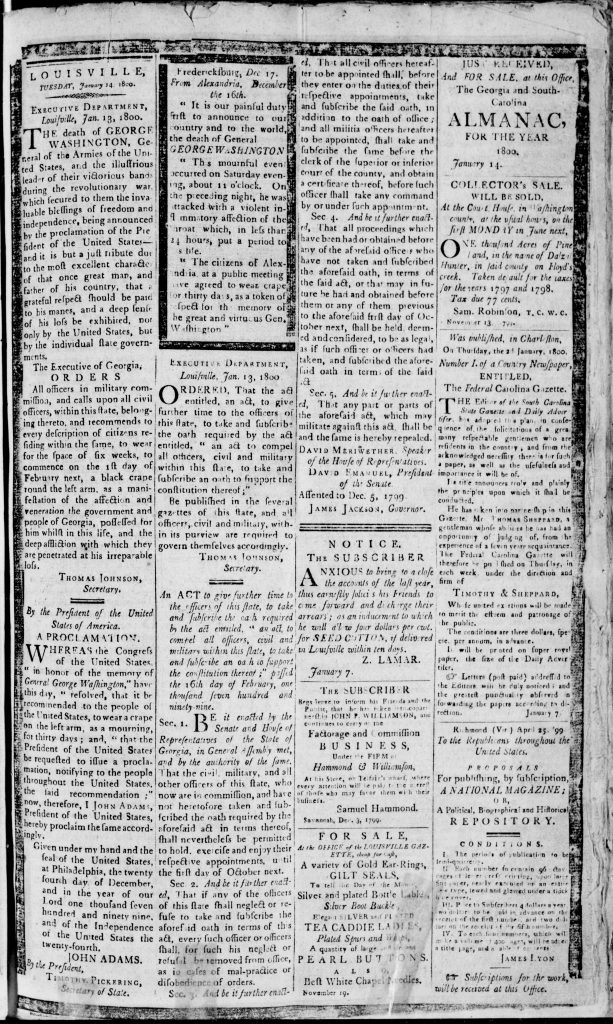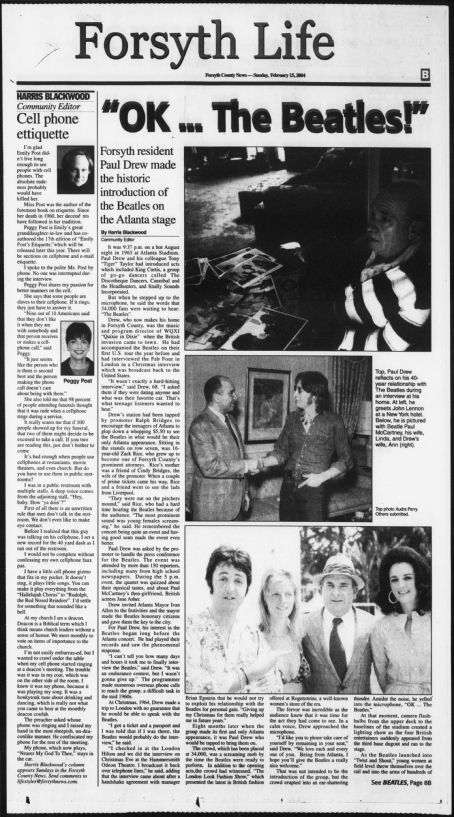Five favorite newspaper pages of our last 2 million digitized by Digital Library of Georgia as selected by staff members Donnie Summerlin and Daniel Britt
Macon Telegraph, November 1, 1826
This is the first newspaper page I digitized when I began work fourteen years ago at the Digital Library of Georgia (DLG). The Macon Telegraph is the third oldest continuously published newspaper in the state and has a rich history of news coverage in middle Georgia. I particularly love the typeface used in the masthead on this first issue of the paper. I don’t believe I’ve ever seen it used in any of the other eight hundred newspaper titles we’ve published. –Donnie Summerlin
—
Louisville Gazette, January 14, 1800
As a staff member for the Georgia Newspaper Project, I had an opportunity to view bound volumes of the Louisville Gazette, and this page caught my eye because of the extra-bold columns. It was then that I learned historic newspapers used bold columns when reporting the death of prominent American figures, in this case, George Washington. Georgia’s late-18th and early-19th century newspapers fascinate me. They add a certain gravity to the state’s history, and to have a paper from Georgia’s first state capital is immensely cool. — Daniel Britt
—
For over a century, cartoons have been a popular feature in Georgia newspapers. This uncredited cartoon from the March 30, 1988 issue of the Flagpole is one of my favorites. The Flagpole is an alternative newspaper that self-identifies as the “Colorbearer of Athens.” The paper is treasured by those that follow the college town’s famed music scene that has included such acts as the B-52s, R. E. M., Pylon, Neutral Milk Hotel, the Drive-By Truckers, and dozens of others. Music lovers will also appreciate that this issue also includes an interview with the beloved college band Let’s Active from Winston-Salem, North Carolina, and an ad for Jonathan Richman and the Modern Lovers, scheduled to play at the University of Georgia’s Legion Field. –Donnie Summerlin
—
Forsyth County News, February 15, 2004
As a fan of the Beatles, I love this story about how Forsyth County resident Paul Drew introduced the Beatles before their only concert in Atlanta in 1965. Drew was the WQXI musical director in Atlanta and struck up a decades-long relationship with the Fab Four. The story printed in the Forsyth County News includes several photos of the Beatles you won’t find published anywhere else. –Donnie Summerlin
—
The Great Kennesaw Route Gazette, June 1, 1886
Of all the historic newspapers I have microfilmed and helped digitize, The Great Kennesaw Route Gazette’s masthead is among one of the most ornate; it’s was extremely rare for a newspaper publisher to spare no expense for such typography. The paper circulated at each of the Western and Atlantic Railroad’s twenty-two stops, and carried editorials that set it apart from all other railroad papers. When I’m feeling particularly imaginative, I like to think about what it was like to flip through the paper while waiting for my northward or southward train. — Daniel Britt






